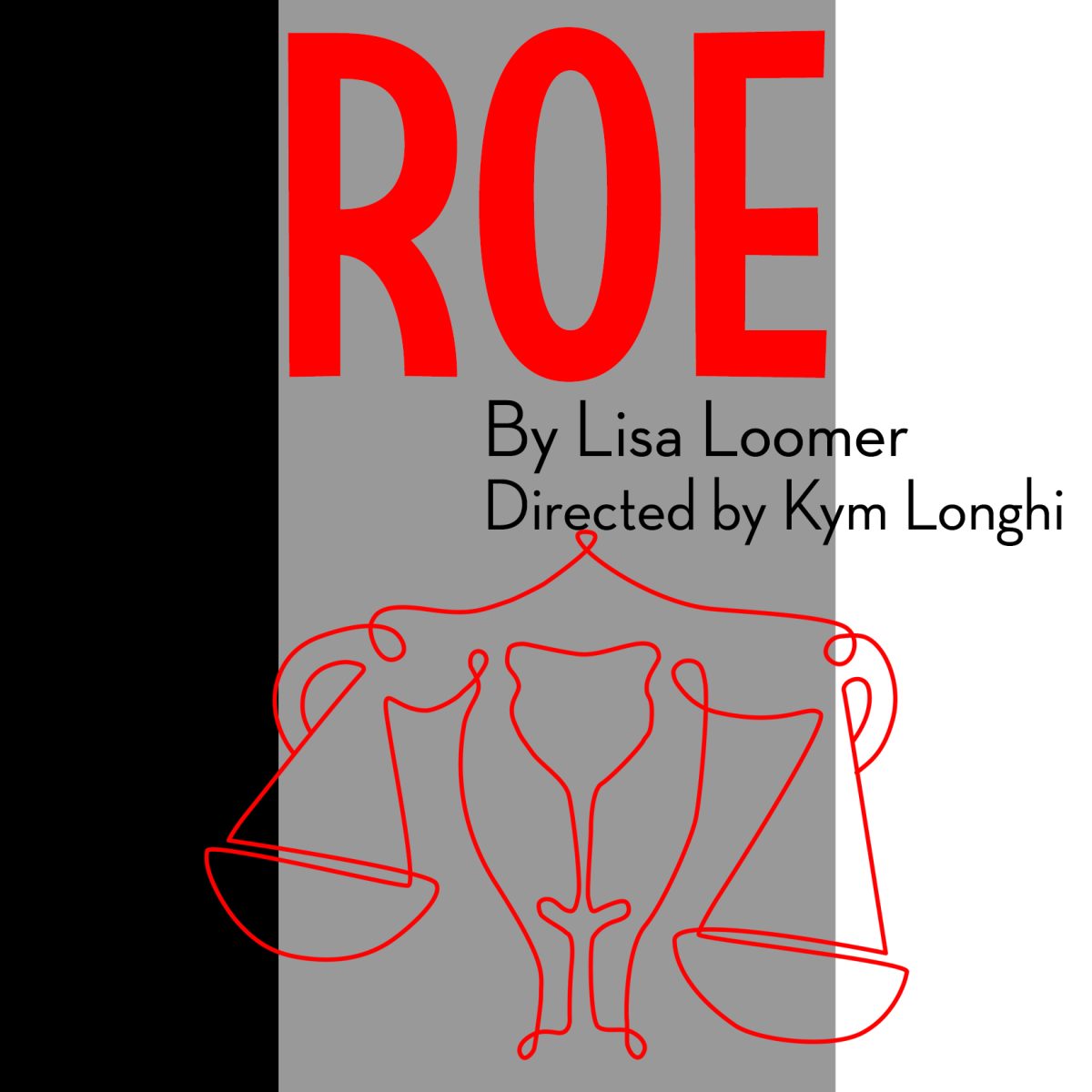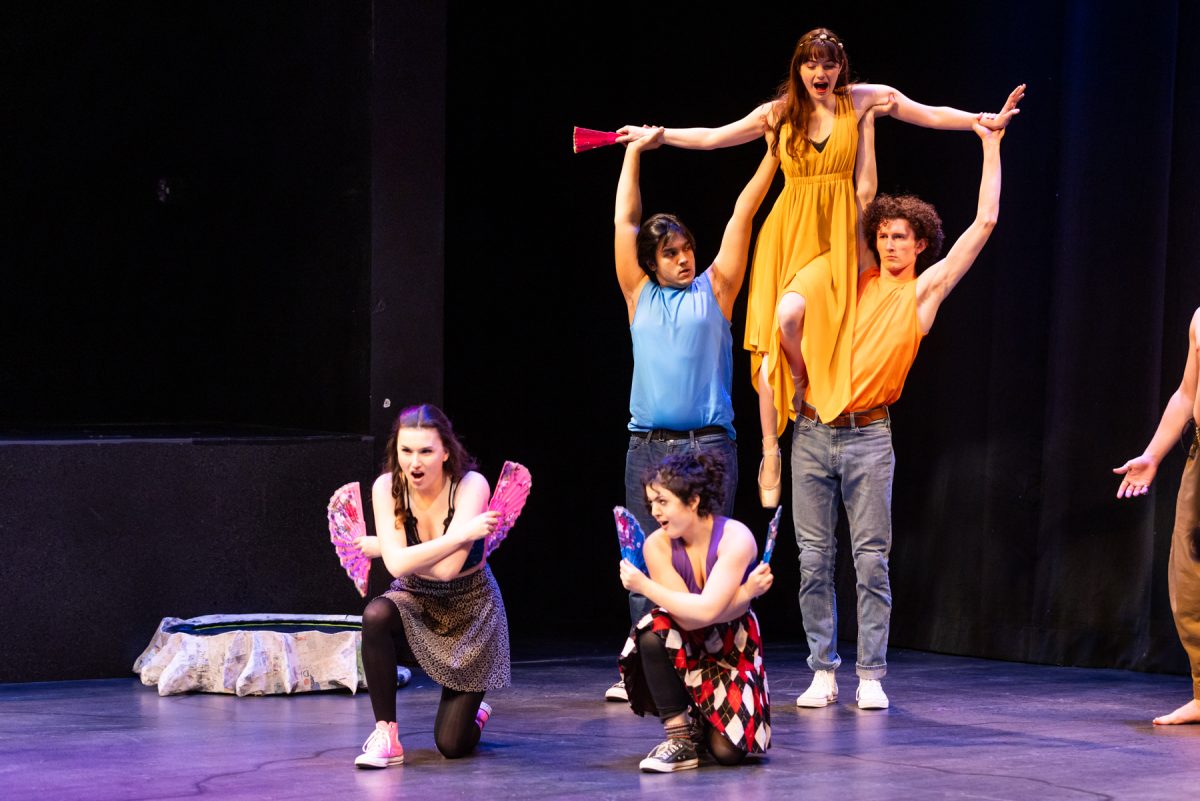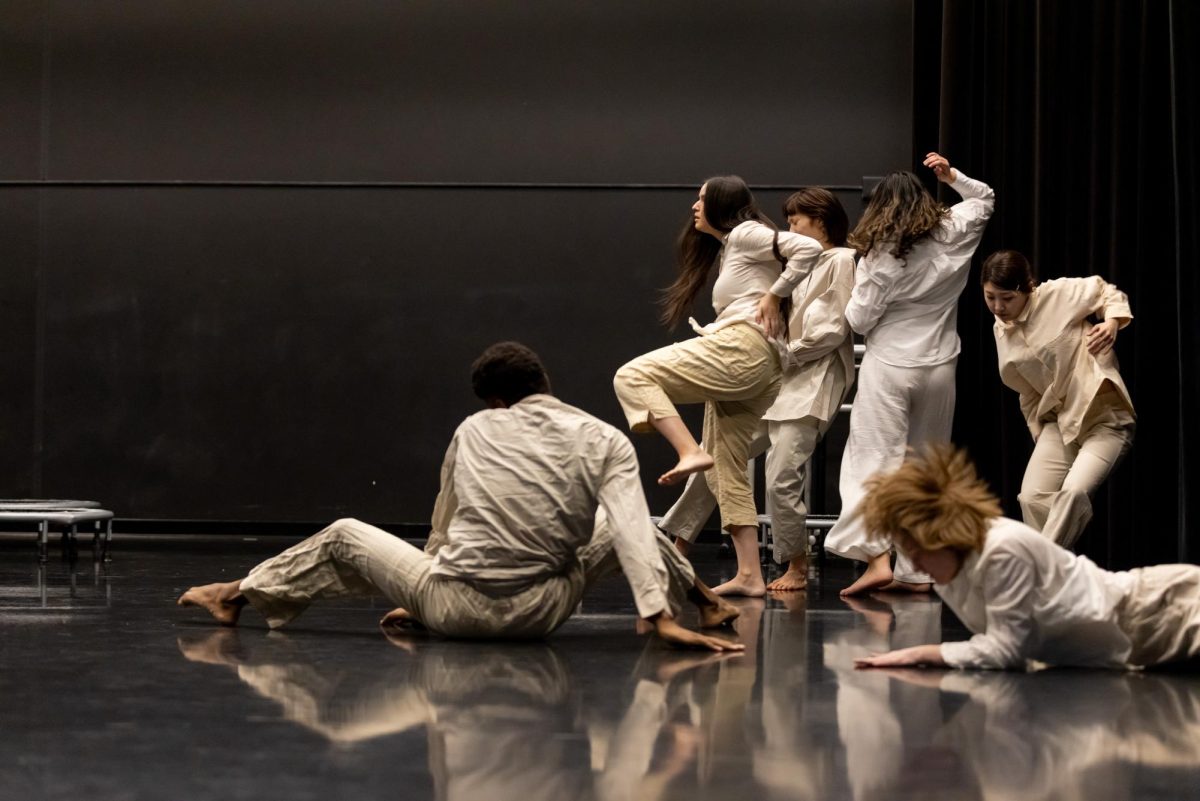All right kids, crowd around. Take your spots there on the carpet. Everyone over 21 go to the back. No, turn your cell phones off. Attention everyone, attention! Today’s lesson is about “Wild Rumpus at the Jungle.”
Wild Rumpus Books for Young Readers and the Jungle Theater have coordinated a theatrical reading program for children ages 4 and up.
Which doesn’t mean it’s only for kids.
Mrs. Peterson (Wendy Lehr), that wholesome homemaker, and her musically inclined neighbor Amelia Miller (Roberta Carlson) collaborate in reading four children’s books. The stories not only resonate with the spirit of the holiday season, but also teach children lessons and new knowledge.
And where there are sugarplums, holiday cheer and stockings, there’s bound to be an overabundance of Christian ideals, too.
Mrs. Peterson starts things off with some good clean Christmas fun from the animal kingdom. Even after strong-arming those critters with language and reason, we have now bestowed upon them our greatest tradition: the Christian secular holiday.
In Laura Numeroff’s book “If You Take a Mouse to the Movies,” illustrated by Felicia Bond, rodents prove to be not only pesky vermin, but capricious consumers. “If you take a mouse to the movie, he’ll ask you for some popcorn. Then he’ll want to hang them on a Christmas tree. You’ll have to buy him one,” says the narrator, an omniscient rodent expert.
Similarly, “A Christmas Stocking Story” by Hilary Knight aims to entertain viewers with fuzzy creatures. A group of animals (bugs, birds and beasts) must learn to cope with bad gifts from Santa after their stockings get switched.
The elephant’s stocking seems to be longer and lankier than of that Christmases past, whereas the snake’s stocking has turned from a sock into a blanket. And it’s the same for every animal in town.
What to do? After the fish “fell in a solemn hush, finding her (stocking) held comb and brush,” the animals learn to how to deal with the stocking stuffer problem by trading gifts to match each other’s personalities.
“The Thanksgiving Door” by Debby Atwell takes chance and accidents and turns them into a favorable experience. Ed and Ann have ruined their Thanksgiving dinner. With nowhere to go, Ed proposes trying the New World Cafe down the street.
But when they enter the strange, subterranean diner, things are not what they expected. The table decorations include men with great beards and big fur hats, dancing cross-armed in front of onion-domed cathedrals.
Then the immigrant proprietors, Olga, Tatyana and Leon, come out and give Ed and Ann a Thanksgiving they won’t forget. After the Russian immigrants celebrate Thanksgiving, they get right down to the post-turkey khorovod folk dancing, which leads to the problematic assumption: Other nations in the world, besides the United States, also celebrate the Thanksgiving holiday.
None of this stops Wendy Lehr, a former member of the Children’s Theatre Company, from telling a good story. In her recount of the Russian folk dancing, she hitches up her skirt and does some kicking of her own.
The more advanced narrative of Kathryn Night’s “Marven of the Great North Woods” allows Lehr to draw viewers into the story with her subdued storytelling technique: a whisper.
In this book children are introduced to a number of historical and cultural facts. It is the early 1900s and Marven, no more than 10, has to be sent to the Canadian border because of an influenza epidemic. His parents, Russian Jews who have escaped Tsarist persecution in their homeland, decide to send him to a logging camp.
Through Marven’s journey, children learn new food names like latkes (potato pancakes) and knishes (potato and floor dumplings). They are also presented with new French words like derriere (bottom) and bonjour (hello). Night’s narrative doubles as a reading achievement for children.
Phrases like “Five Jacks in the sack” fill the book with rhyme schemes. “Immense men with long beards and wild hair were jumping around to the fiddler’s tunes like a pack of frantic grizzly bears,” says the objective narrator, giving a strong sense of simile.
“Wild Rumpus at the Jungle” uses theater and literature as a vehicle to teach children different perspectives and ideas. But a dose of religious relativism could do those viewers a little too accustomed to the Christmas holiday some good. Why not a story about a Jewish girl’s struggle to understand the difference between Hanukkah and Christmas in a predominantly Christian society?
Children, after all, can only learn what they are taught. “Wild Rumpus at the Jungle” might want to think about presenting them with the gift of balanced perspective next Christmas.














